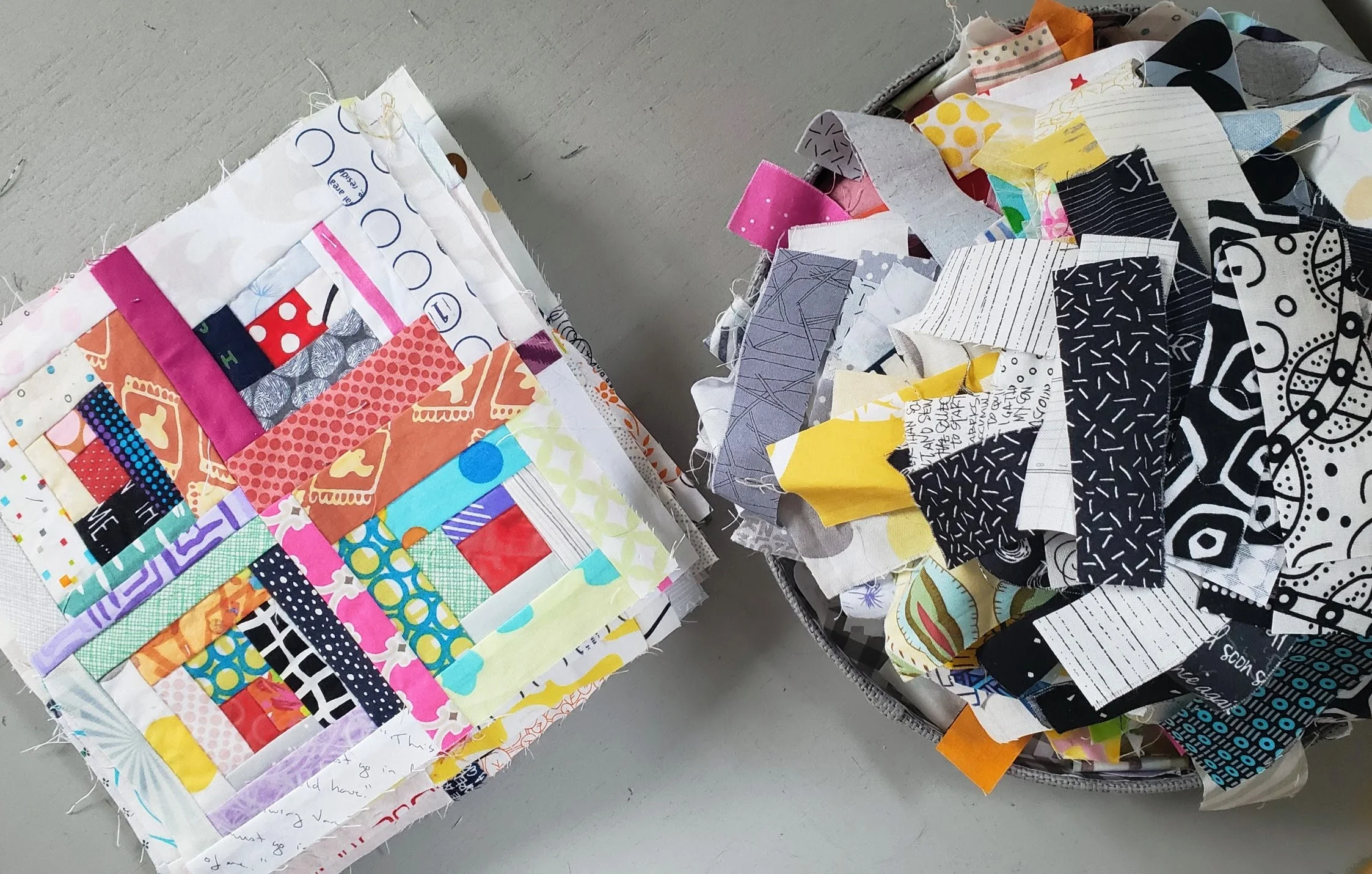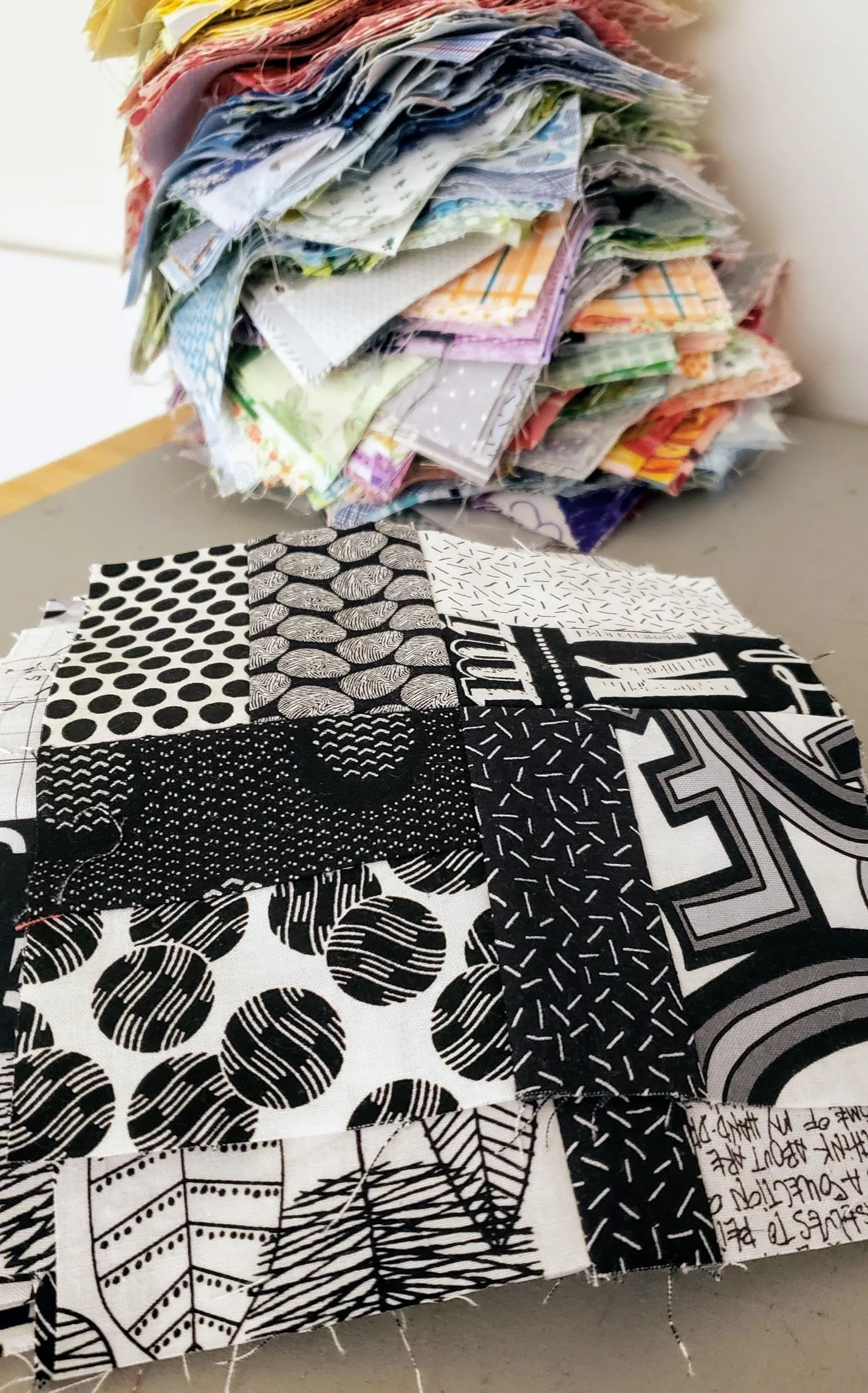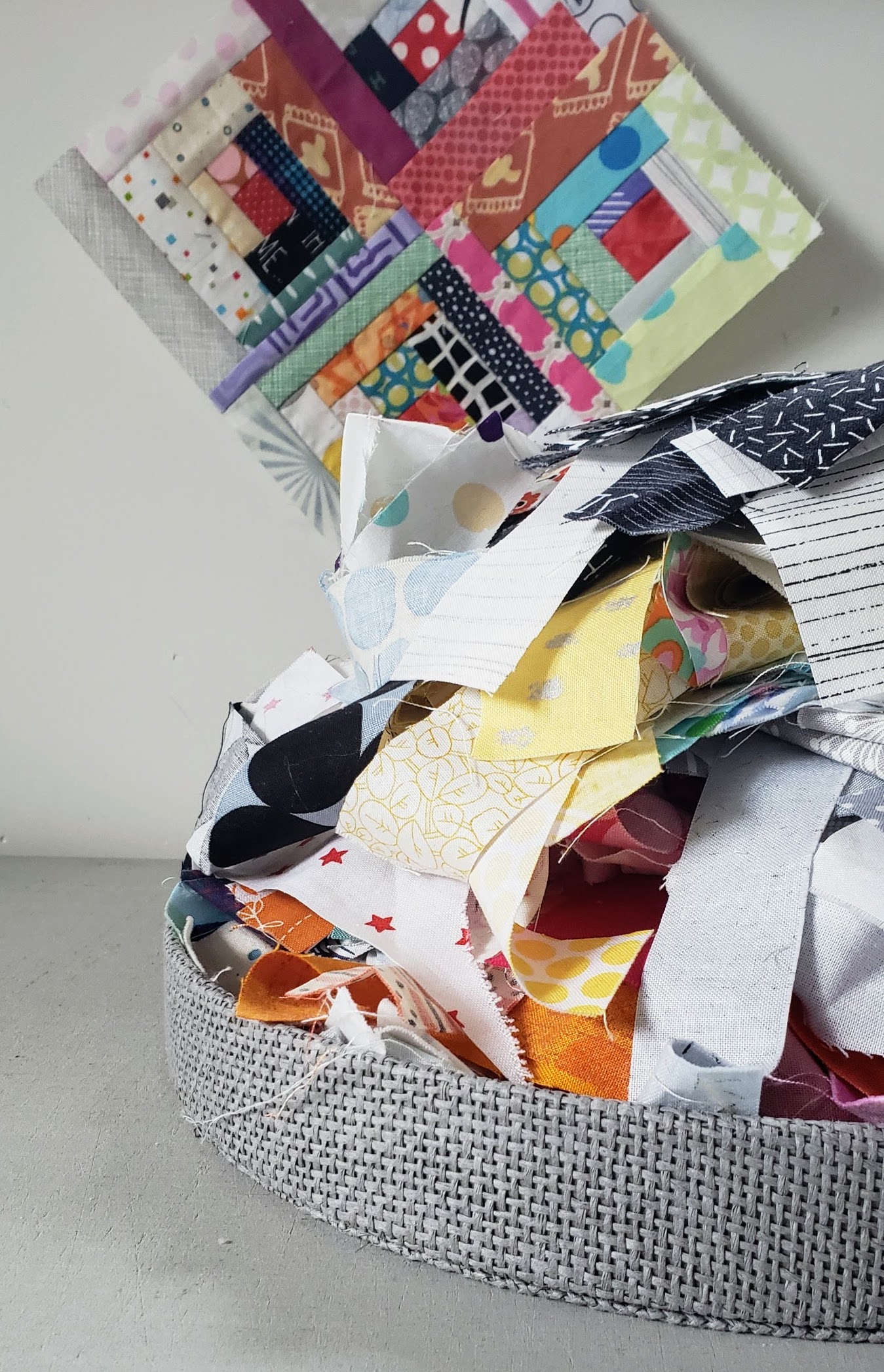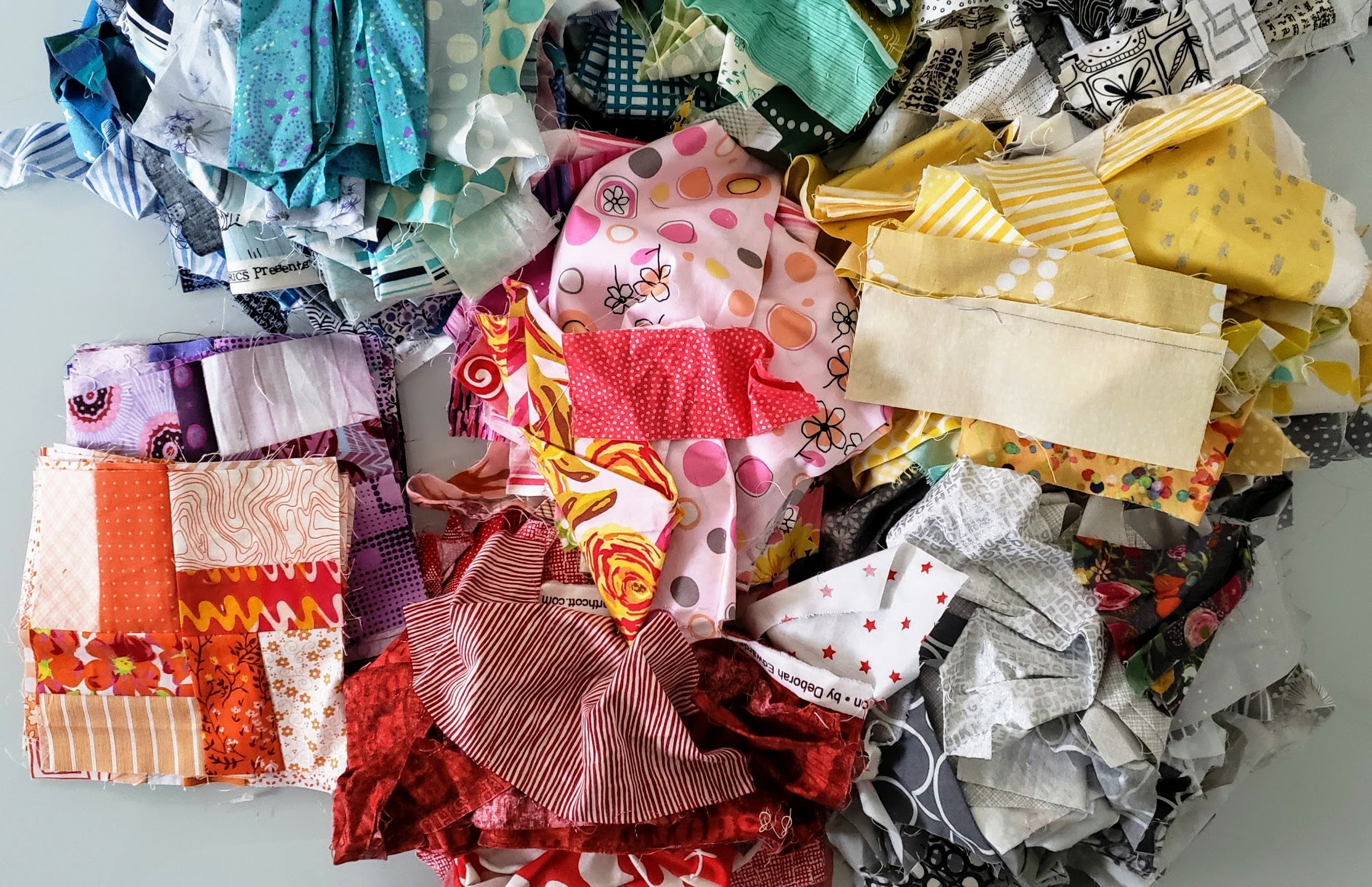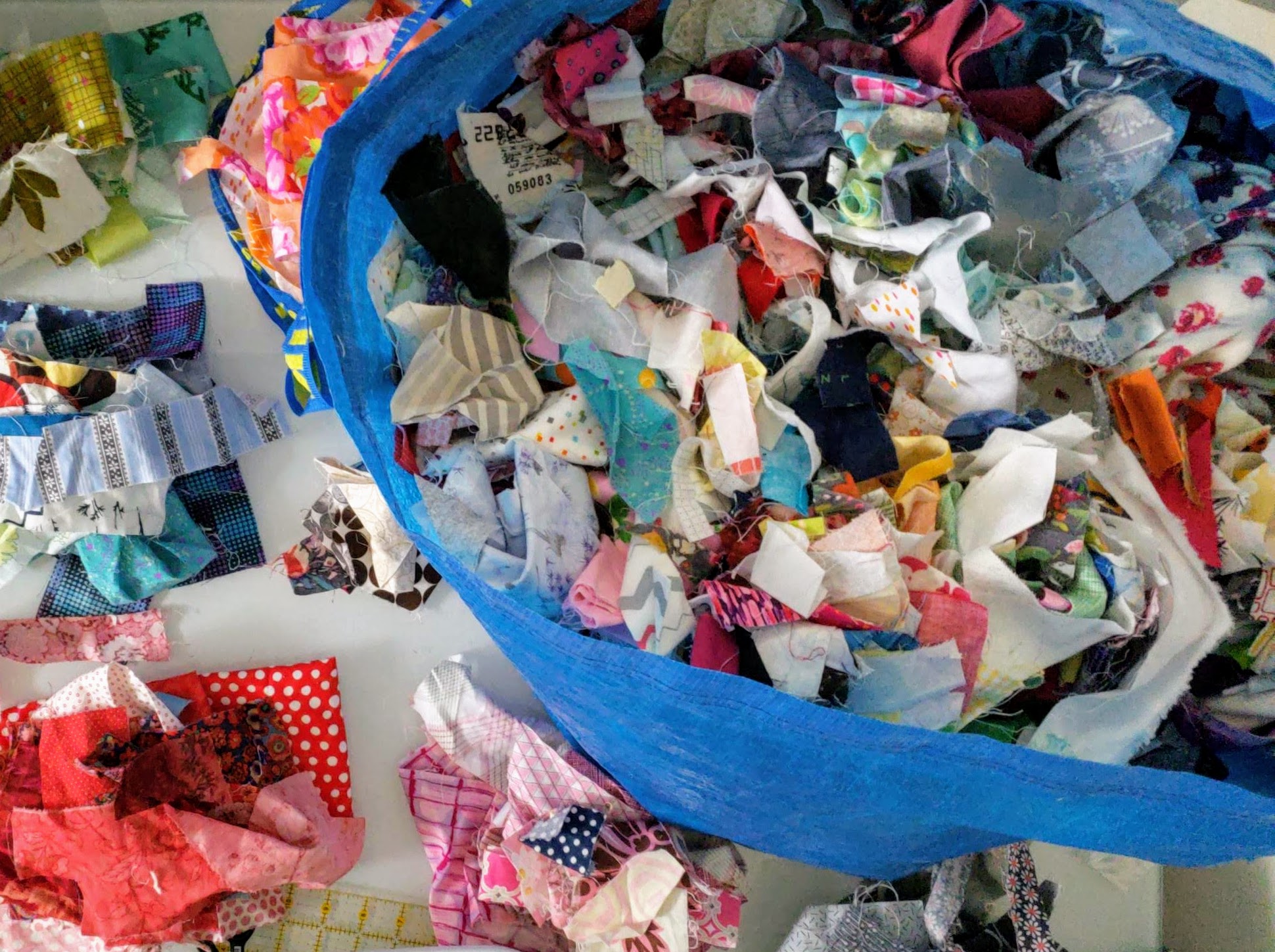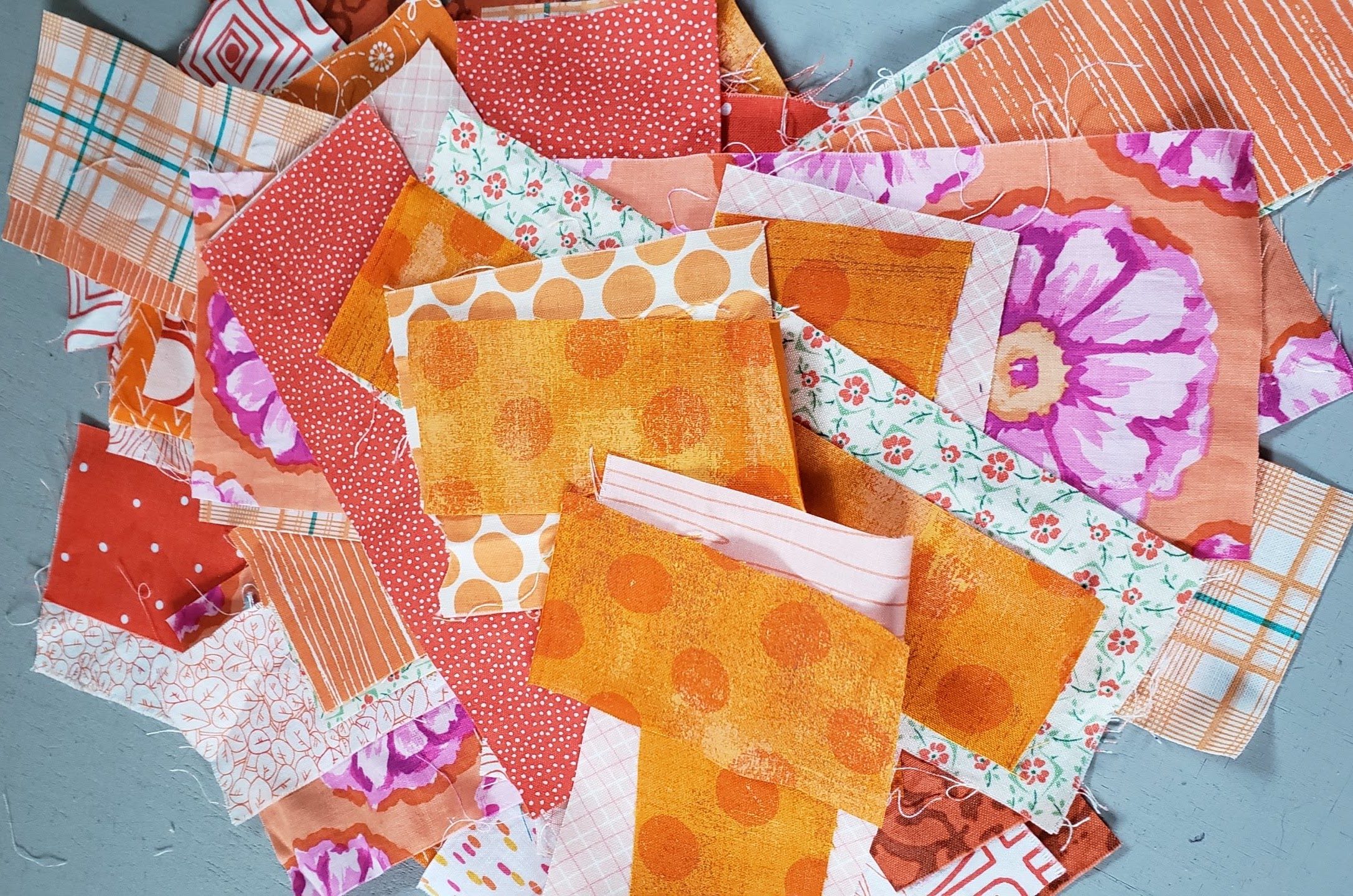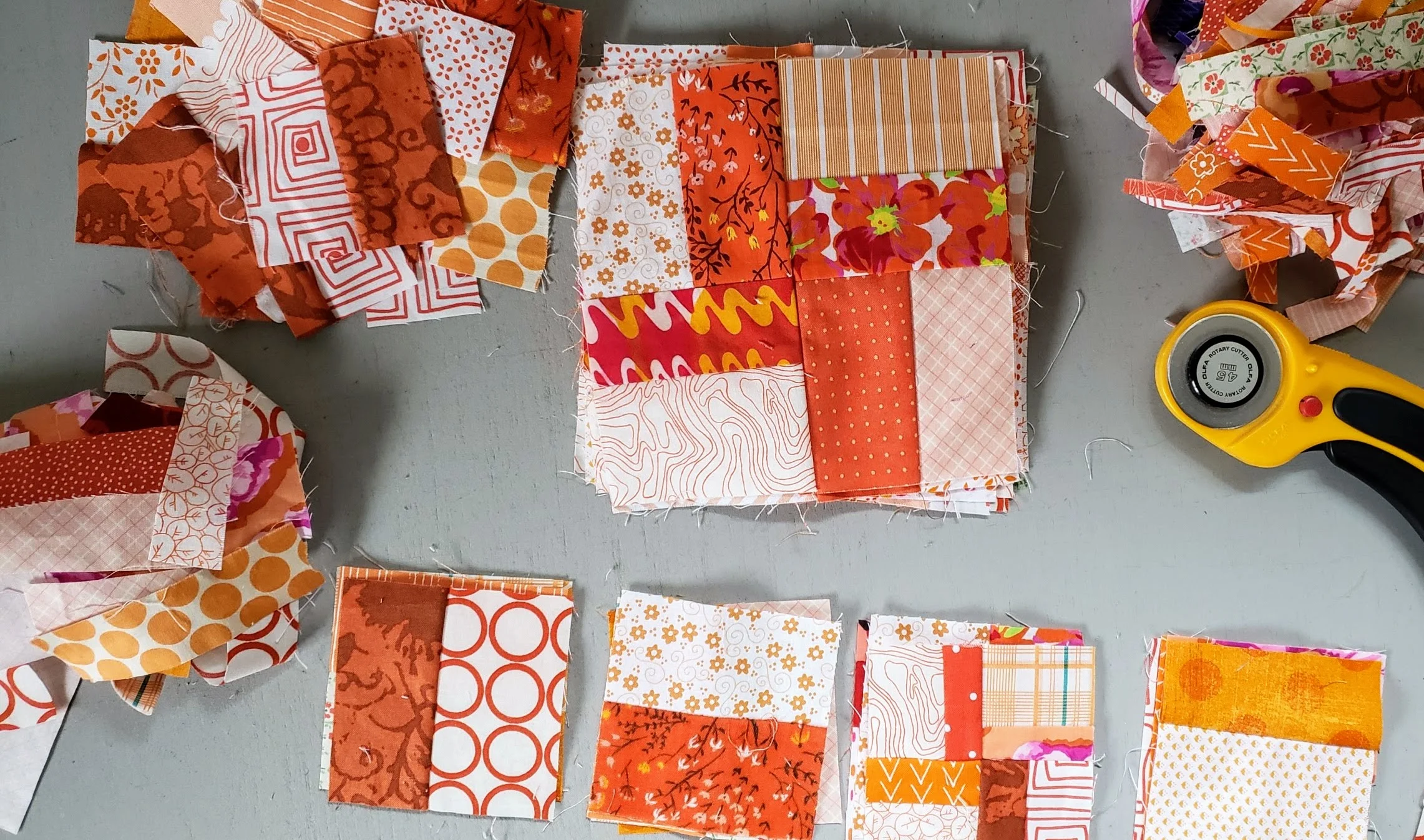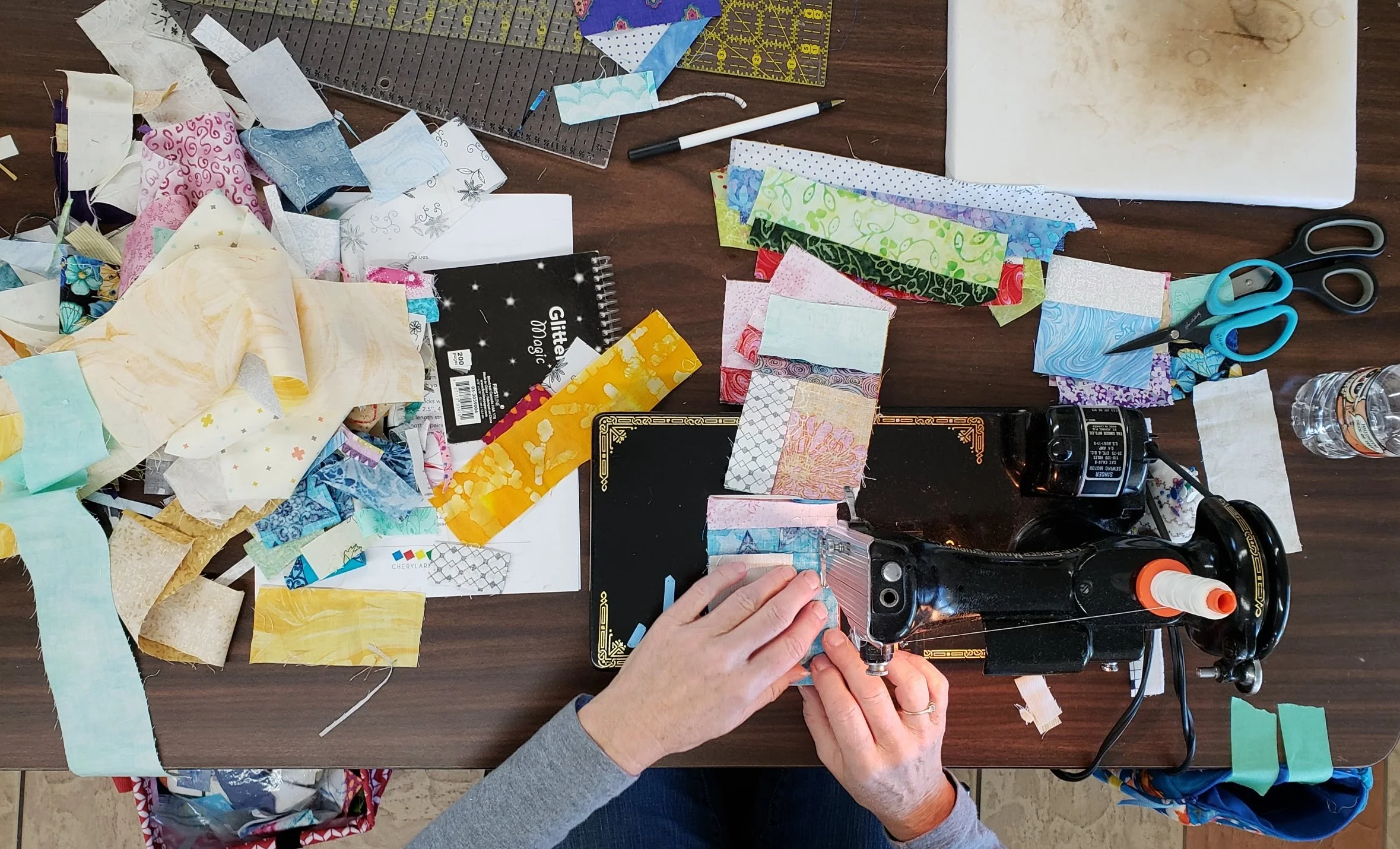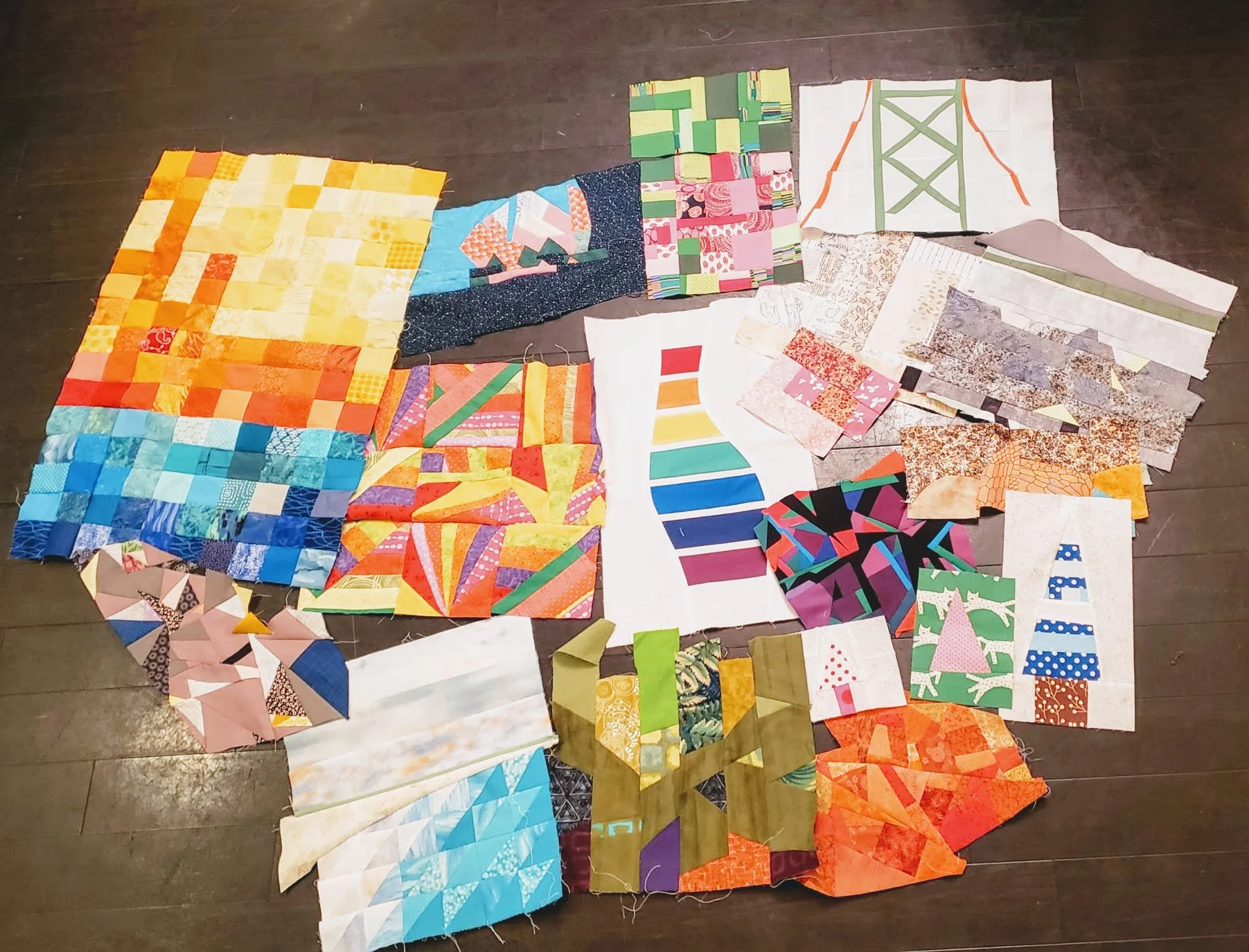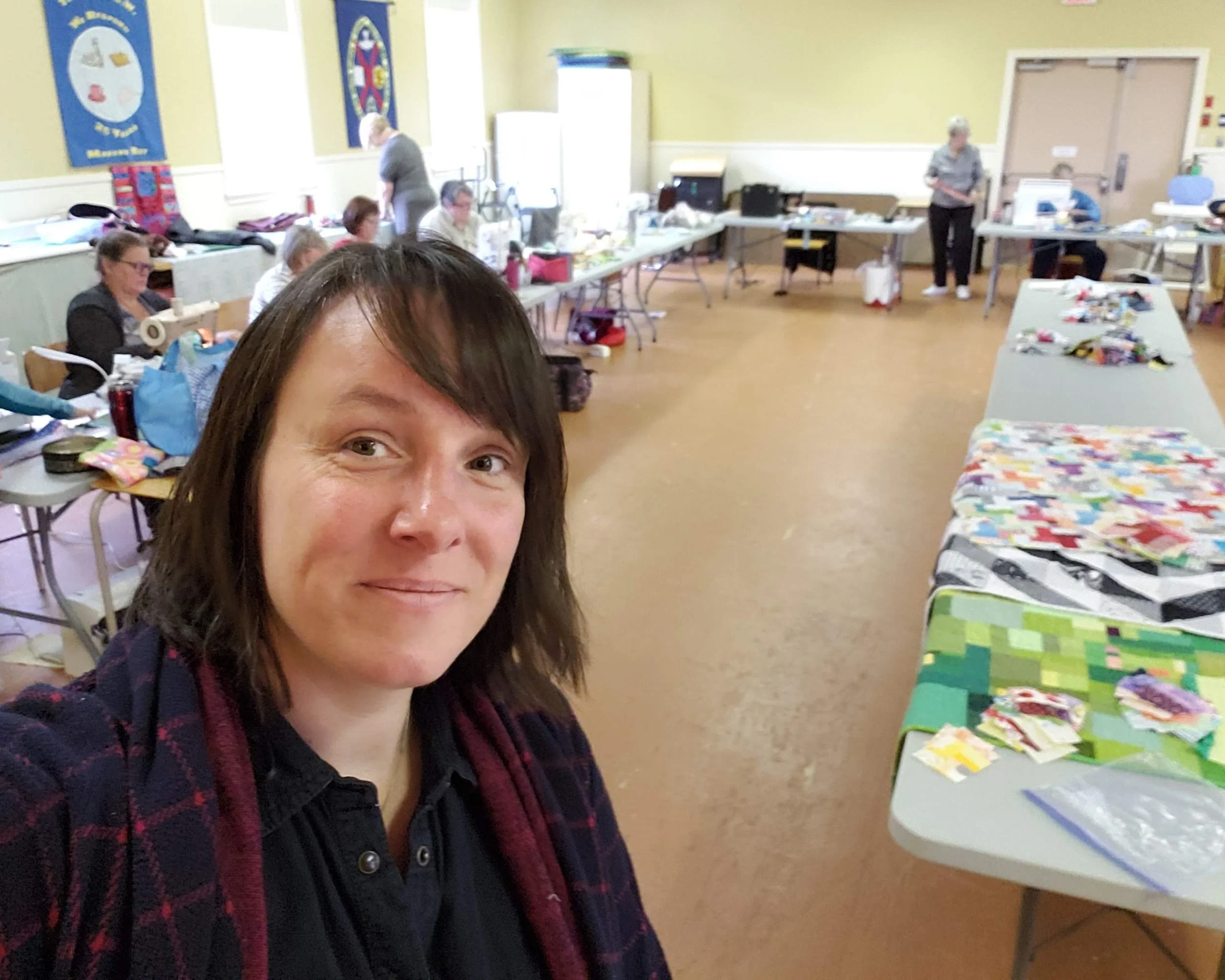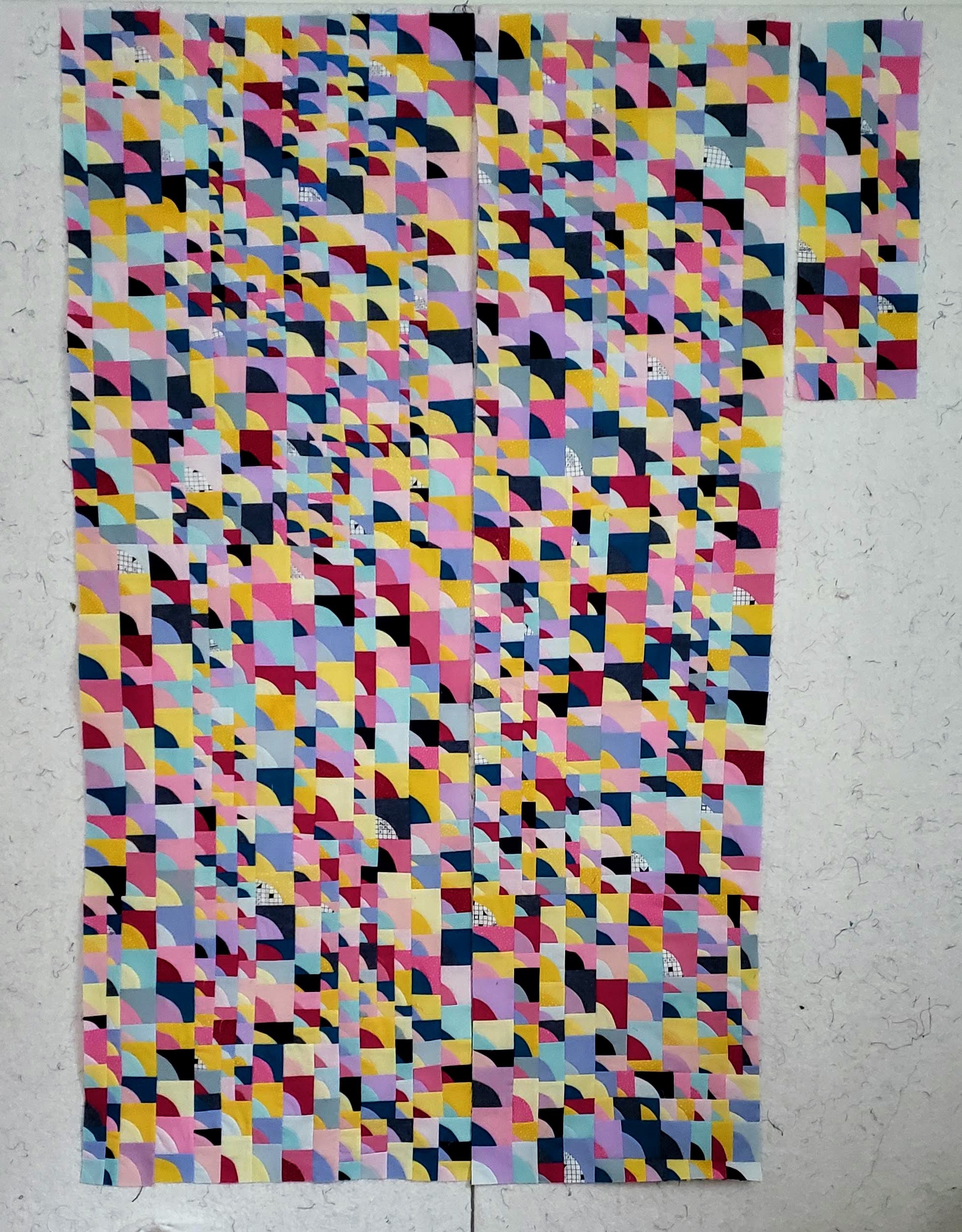The first thing I tell my students is that what they make in class doesn’t have to be anything. Not even a mug rug or a Meals on Wheels placemat or pillow, let alone the start of a quilt. It can just be some fabric you sewed together. Ultimately, and more importantly, the class is about showing up. Just being there: embracing your own creativity, good company, and the process of quiltmaking. I want everyone to learn, but mostly, I want everyone to play.
The second thing I tell my students is that we are there to jump off a cliff. Not to worry, though, I am going to hold your hand every step of the way. Improv work, the bulk of my classes, does not come easy for most. It takes a leap. But with me in the classroom - or church hall - you have guide on the creative journey.
As a quilt teacher I see myself as three other things on top/in conjunction with quiltmaking guide: performer, playground supervisor, and therapist.
Performer
Unfortunately, I don’t get a spotlight or pyrotechnics for each class I teach. Sounds systems are nice, but not necessary (as anyone who knows me knows what I mean). Stages can sometimes be found in the room. You see, when I am in front of a group of quilters I consider myself a performer, not just a teacher.
It only took one class for me to realize that a teacher that sits at the front of the room sewing her own stuff is quite possibly the worst kind of teacher. I’ve been in those classes, as a student, and I will admit, have been that teacher at times. It is the worst. You, the student, paid money to be there, took the time to be there, hauled all your stuff to be there. If I am not going to give a thing to take home at the end of the day then I sure as hell better make the day worth it for all for you!
You can be guaranteed of stories, some bad jokes, ideas, hand holding, stunt sewing, and more. This is on top of the stellar quilting techniques we do. Hopefully no pyrotechnics though - cotton is flammable.
Playground Supervisor
At my kids’ elementary school the teachers take turns supervising recess. They walk around in reflective safety vests so everyone knows who they are. Just enough supervision to stop a fight or bandage a skinned knee. Mostly they stay out of the way and let the kids do their thing. And what are the kids doing? Playing made-up and real games, sitting in groups gossiping, tackling each other, looking for four-leaf clovers, creating yet another version of tag or grounders, or generally enjoying not having to think for a little while. Recess is the best.
I like to think of my classroom as the playground. We are there to play! To explore, to experiment, to try something new, to figure something out. It’s like taking the basic rules of tag but having a million iterations. We still use a 1/4’’ seam allowance, we still press, and squaring up happens eventually. After that? Well, we are only constricted by our fear and perceived limitations.
By no means am I the quilt police, but maybe I should wear a bright safety vest next time I teach, just so you know who I am?
Therapist
This is a stereotype. The more traditional the guild, the harder it is for most participants to relax and play. We are just so used to playing by all the rules and sitting nicely. When I say it is time to get dirty and throw some rules out many people balk. It just isn’t what they are comfortable with/used to/approve of/like. I get that. It’s normal, it’s okay. It doesn’t mean, however, I won’t encourage you to try something new just for today.
When people are struggling with what I am trying to teach or the space I am creating to play I don’t like to leave them struggling. I will sit down and have a chat. We’ll talk about the why of their quiltmaking and why this particular approach is so hard for them. I’m coming to realize that it makes me a bit of a therapist. (Minus any degrees, training, or certification.) I can’t offer any real life solutions to real life problems, but I can hold their hand as they talk about their quiltmaking journey.
What I can also do fairly well now is understand why they struggle with my approach. The response, then, is unique to each quilter. Sometimes a few personal, encouraging words is all that is needed. Other times I might literally hand them the fabric and tell them where to sew as a start. And for those running full throttle with the play and improv techniques I teach it might mean a high five or chest bump, or even a slight pull back. No matter what, I’ve got your back. I’m here for you.


